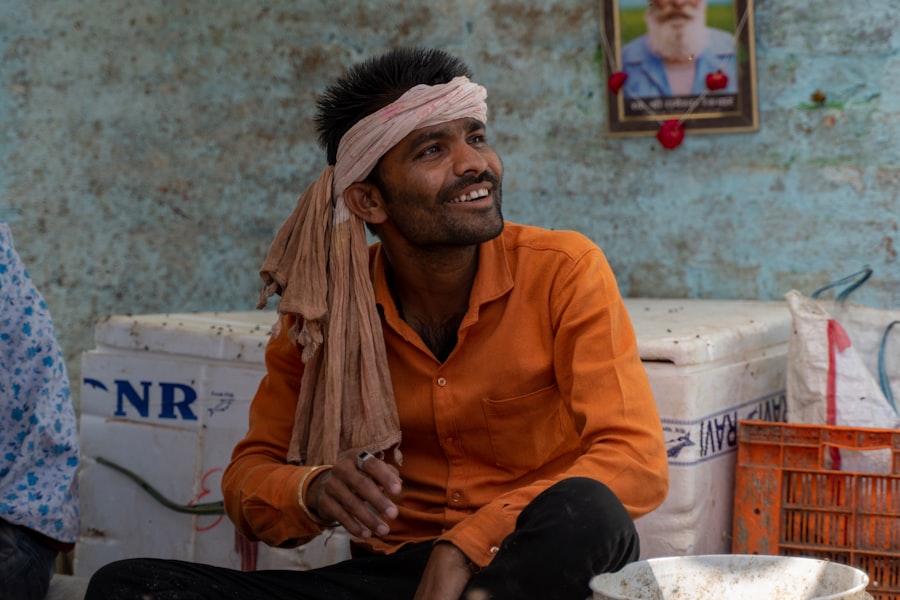The Sudra caste, one of the four primary varnas in the traditional Hindu social hierarchy, has its origins deeply rooted in ancient Indian society. According to the Rigveda, one of the oldest sacred texts of Hinduism, the varna system was established as a means to organize society based on occupational roles. The Sudras were primarily associated with labor and service, often performing tasks that were essential for the functioning of society but were considered menial or lowly.
This classification was not merely a reflection of social roles but also intertwined with religious and philosophical beliefs that sought to justify the hierarchical structure. The etymology of the term “Sudra” is often linked to the Sanskrit word “shudra,” which means “to serve.” This etymological connection underscores the role of Sudras as service providers within the broader societal framework.
However, their position in society was often precarious, as they were subjected to the whims of the higher castes, particularly the Brahmins and Kshatriyas. The rigid caste system that emerged over centuries not only defined social interactions but also dictated the economic and political dynamics of ancient India.
Key Takeaways
- The Sudra caste originated from the Vedic social hierarchy in ancient India, serving as laborers and artisans.
- Historical practices of untouchability in India involved the segregation and discrimination of lower castes, particularly the Dalits, from higher castes.
- Slavery played a significant role in Indian society, with lower castes and marginalized communities often being subjected to forced labor and exploitation.
- Modern-day impacts of caste discrimination include social and economic marginalization, limited access to education and employment opportunities, and systemic oppression.
- Efforts to combat caste-based discrimination include legal reforms, affirmative action policies, and grassroots movements advocating for social equality and justice.
Historical Practices of Untouchability in India
Origins of Discrimination
Untouchability, a social practice that emerged from the caste system, has a long and painful history in India. It is often associated with the treatment of those deemed “untouchables,” or Dalits, who were considered outside the four-fold varna system. The origins of untouchability can be traced back to various historical texts and practices that marginalized certain groups based on their perceived impurity or low status.
Legalized Discrimination
The Manusmriti, an ancient legal text, codified many of these discriminatory practices, prescribing severe penalties for those who interacted with or touched individuals from lower castes. Throughout history, untouchability manifested in various forms, including social ostracism and physical segregation. For instance, in many regions, Dalits were forced to live on the outskirts of villages and were prohibited from entering temples or drawing water from common wells.
A Systematic Denial of Human Rights
This segregation was not merely a social inconvenience; it was a systematic denial of basic human rights and dignity. The practice of untouchability was often justified through religious doctrines that emphasized purity and pollution, creating a deeply entrenched belief system that perpetuated discrimination across generations.
The Role of Slavery in Indian Society

While the caste system and untouchability are often discussed in isolation, it is crucial to recognize the interconnectedness of these social phenomena with slavery in Indian society. Slavery in India has existed in various forms throughout history, with individuals from lower castes often subjected to servitude and exploitation. Historical records indicate that slavery was prevalent during ancient times, with individuals being sold into bondage due to debt, war, or social status.
The plight of these enslaved individuals often mirrored that of the Sudras and Dalits, who were relegated to positions of servitude within the caste hierarchy. The relationship between caste and slavery is complex; while slavery was not exclusively tied to caste, it disproportionately affected those at the bottom of the social ladder. Enslaved individuals were often denied basic rights and subjected to harsh living conditions.
They were forced to work in agriculture, domestic service, and other labor-intensive roles without any form of compensation or recognition. This exploitation was not only a violation of human rights but also reinforced the existing caste dynamics that dehumanized individuals based on their birth.
Modern-Day Impacts of Caste Discrimination
In contemporary India, the legacy of caste discrimination continues to have profound implications for millions of people. Despite constitutional provisions aimed at eradicating caste-based discrimination, societal attitudes and practices remain deeply entrenched. The persistence of caste-based violence, discrimination in employment, and limited access to education are just a few examples of how historical injustices continue to shape the lives of individuals from marginalized communities.
Moreover, caste discrimination has far-reaching effects on social cohesion and national development. The stigma associated with lower castes can lead to social isolation and exclusion from mainstream society.
In rural areas, this often translates into limited access to resources such as land ownership, healthcare, and political representation. The psychological impact of caste discrimination cannot be understated; individuals from marginalized communities frequently experience feelings of inferiority and hopelessness due to systemic oppression. This ongoing struggle for dignity and equality highlights the urgent need for comprehensive reforms that address both societal attitudes and institutional practices.
Efforts to Combat Caste-Based Discrimination
Recognizing the pervasive nature of caste-based discrimination, various efforts have been initiated at both governmental and grassroots levels to combat this social malaise. The Indian Constitution, adopted in 1950, explicitly prohibits discrimination based on caste and provides for affirmative action measures aimed at uplifting marginalized communities. Policies such as reservations in education and government jobs have been implemented to ensure representation for Scheduled Castes (SC) and Scheduled Tribes (ST).
These measures have had a significant impact on increasing access to opportunities for historically marginalized groups. In addition to legal frameworks, numerous non-governmental organizations (NGOs) and civil society groups have emerged to advocate for the rights of Dalits and other marginalized communities. These organizations work tirelessly to raise awareness about caste discrimination, provide educational resources, and empower individuals through skill development programs.
Grassroots movements led by Dalit activists have also played a crucial role in challenging societal norms and advocating for social justice. By mobilizing communities and fostering solidarity among marginalized groups, these efforts aim to dismantle the structures that perpetuate caste-based discrimination.
The Intersection of Caste, Untouchability, and Slavery in India

The intersectionality of caste, untouchability, and slavery in India presents a complex tapestry of social injustice that has evolved over centuries. Each element reinforces the others, creating a multifaceted system of oppression that is difficult to dismantle. The historical context reveals how untouchability emerged as a means to maintain social order within the caste system while simultaneously facilitating forms of slavery that exploited those deemed inferior.
This interconnectedness is evident in contemporary issues where individuals from lower castes continue to face systemic barriers rooted in historical injustices. Understanding this intersectionality is crucial for addressing the ongoing challenges faced by marginalized communities in India today. Efforts to combat caste discrimination must consider the historical context of untouchability and slavery while also recognizing how these issues manifest in modern society.
For instance, initiatives aimed at improving educational access for Dalits must also address societal attitudes that perpetuate stigma and discrimination. Similarly, economic empowerment programs should take into account the historical exploitation faced by lower castes to ensure that they are not merely tokenistic but genuinely transformative. In conclusion, grappling with the legacies of caste discrimination requires a nuanced understanding of its origins and manifestations throughout history.
By acknowledging the interconnectedness of caste, untouchability, and slavery, society can work towards creating a more equitable future where all individuals are afforded dignity and respect regardless of their background.
There is a fascinating article on the relationship between society and education as a key driver of development that sheds light on the historical context of Sudras, Untouchability, and Slavery in India. The article discusses how education can play a crucial role in breaking down social barriers and promoting equality. To learn more about this topic, you can read the article here.
FAQs
What is the caste system in India?
The caste system in India is a social hierarchy that categorizes people into different groups based on their occupation and social status. It is a centuries-old system that has traditionally divided Indian society into four main castes: Brahmins (priests and scholars), Kshatriyas (warriors and rulers), Vaishyas (traders and farmers), and Sudras (laborers and service providers).
Who are the Sudras in the caste system?
Sudras are the lowest caste in the traditional Indian caste system. They are often relegated to menial and low-paying jobs, such as agricultural labor, sanitation work, and other forms of manual labor. Historically, they have faced discrimination and social exclusion.
What is untouchability in the context of the caste system?
Untouchability is a practice associated with the caste system in India, where certain groups of people, particularly those belonging to the lowest castes, are considered “untouchable” and are subjected to social ostracism and discrimination. They are often excluded from social and religious activities and are forced to live in segregated areas.
What is the history of slavery in India?
Slavery has a long history in India, with various forms of forced labor and servitude being practiced for centuries. The institution of slavery was prevalent in different parts of the country, with individuals being enslaved through conquest, debt bondage, and other means.
How has the Indian government addressed the issues of untouchability and slavery?
The Indian government has taken steps to address the issues of untouchability and slavery through legislation and social reform. Laws have been enacted to prohibit discrimination based on caste and to protect the rights of marginalized communities. Additionally, various social welfare programs and initiatives have been implemented to uplift and empower those affected by these practices.






















+ There are no comments
Add yours